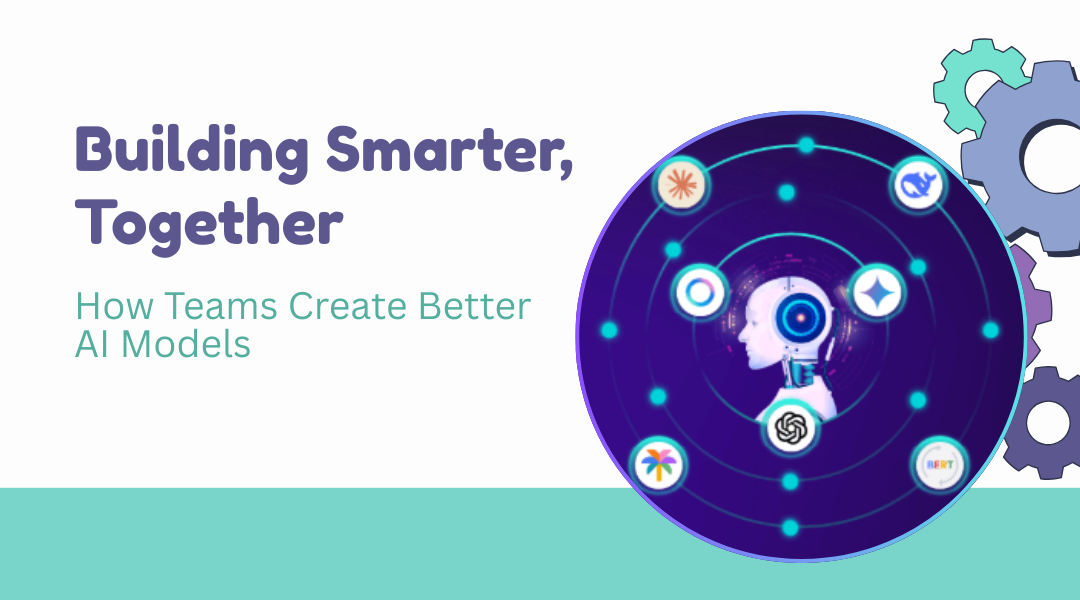AI isn’t built in isolation. The most impactful models—the ones that detect diseases earlier, optimize energy grids, or personalize education—come from teams of people working across disciplines, time zones, and skill sets. But collaboration like this is hard. Really hard.
DeepSeek is built to make it easier. Here’s how.
Tools That Bring People Into the Process
Great AI requires more than great code. It needs domain knowledge, ethical consideration, and real-world validation. That means bringing non-engineers into the development loop.
- Shared Model Notebooks:
Data scientists, engineers, and subject matter experts can work in the same interactive notebook—without stepping on each other’s toes. Comment inline, suggest changes, or tag someone to review your approach. - Visual Feedback for Non-Technical Teams:
A doctor might not understand gradient descent, but they can absolutely review model predictions on patient data. DeepSeek lets stakeholders validate results through intuitive dashboards—not code. - Integrated Communication:
Discuss a model’s behavior, a data discrepancy, or an evaluation metric without switching to Slack or email. Conversations are tied directly to the project—so context never gets lost.
Frameworks That Scale with Ambition
Training modern AI models requires serious compute. Doing it collaboratively requires even more.
- Federated Training Workflows:
Train models across distributed devices or servers without centralizing sensitive data. DeepSeek manages the complexity of syncing updates and merging models—so you can focus on the architecture. - Reproducible Experiment Tracking:
Every training run—hyperparameters, data version, code commit—is automatically logged and versioned. Teammates can replicate, compare, or build on each other’s experiments with one click.
python
# Log an experiment with full context
run = deepseek.start_run(
model_type=”vision_transformer”,
dataset_version=”v3.2″,
hyperparams={“learning_rate”: 1e-4, “batch_size”: 32}
)
# Your training code here
# …
run.log_metric(“val_accuracy”, 0.92)
run.log_artifact(“model_weights.pth”)
Best Practices That Stick
Collaboration without consistency leads to chaos. DeepSeek helps teams align on standards—and actually follow them.
- Automated Code & Model Reviews:
Before a model is merged, DeepSeek checks for common issues: performance regressions, bias drift, dependency conflicts, or even documentation gaps. - Pre-Configured Training Templates:
Create reusable training pipelines for common tasks (image classification, NLP, forecasting). New team members can contribute meaningfully—fast. - Centralized Model Registry:
Every trained model is versioned, evaluated, and documented in a shared hub. No more guessing which model is in production—or why.
Real-World Impact: Where Collaboration Meets Breakthroughs
- Healthcare: Radiologists and AI engineers jointly developed a bone fracture detection model. Their shared workspace cut iteration time by 65% because feedback was immediate and contextual.
- Climate Science: Researchers across 12 institutions collaborated on a global weather prediction model using federated training. They improved accuracy without moving petabytes of climate data.
- Education: Curriculum experts and NLP developers built a personalized learning assistant. Because they designed it together, it actually understood what students needed—not just what engineers could build.
Why This Changes the Game
Too many AI projects fail because they were built by engineers in silos—without enough input from the people who understand the problem best.
DeepSeek flips that script. We’re giving teams a shared space where:
- A biologist can annotate training data and validate outputs without writing a line of code.
- An engineer in Lagos and a researcher in Lisbon can jointly debug a model in real time.
- Every decision—from data sourcing to deployment—is documented, debated, and improved together.
This isn’t just a better way to build AI. It’s a better way to solve problems that matter.
